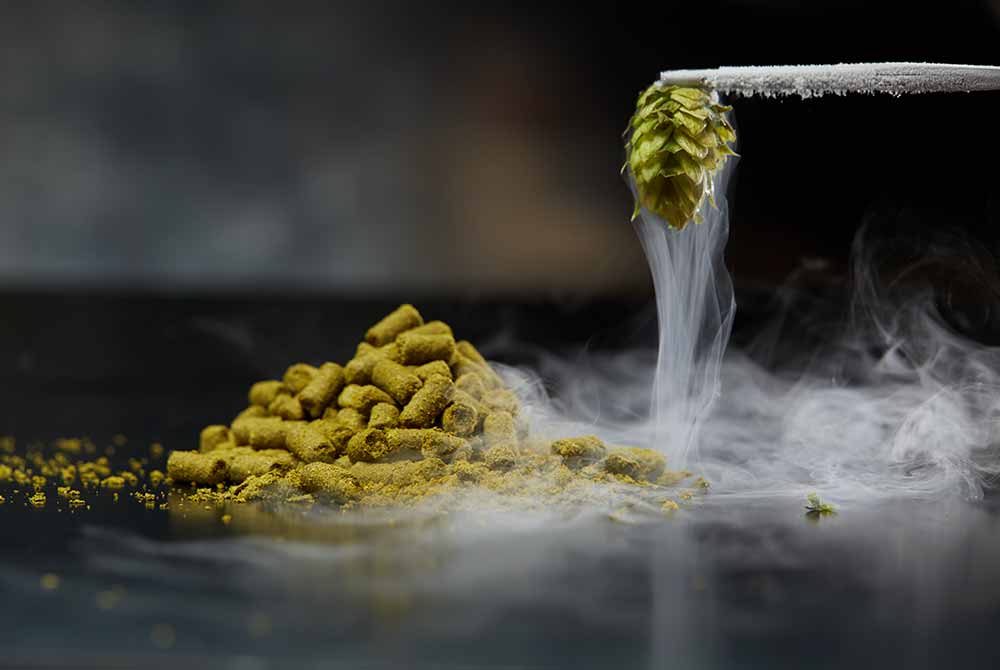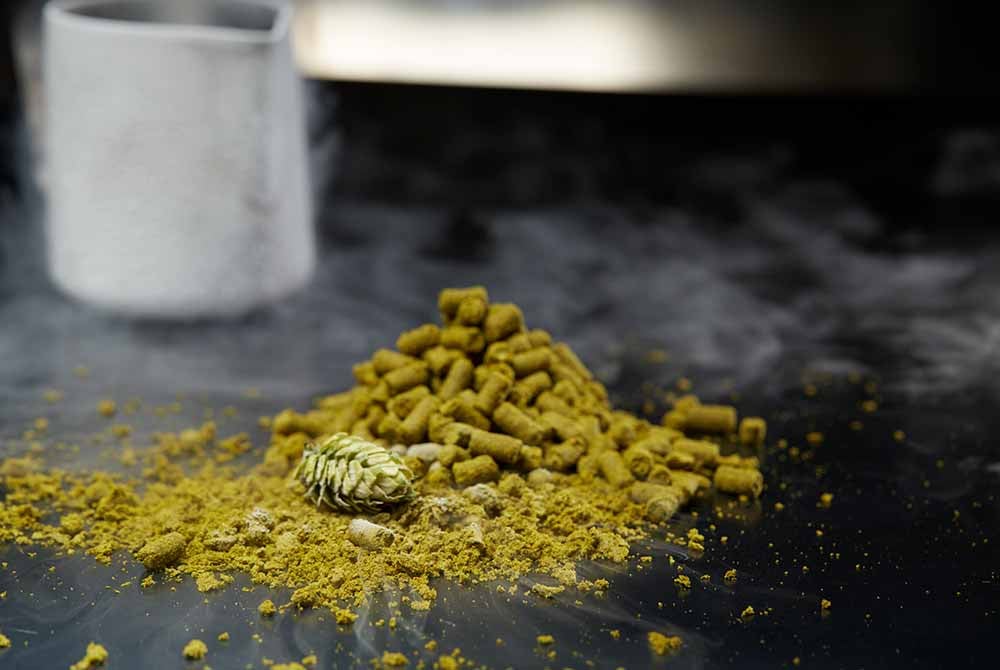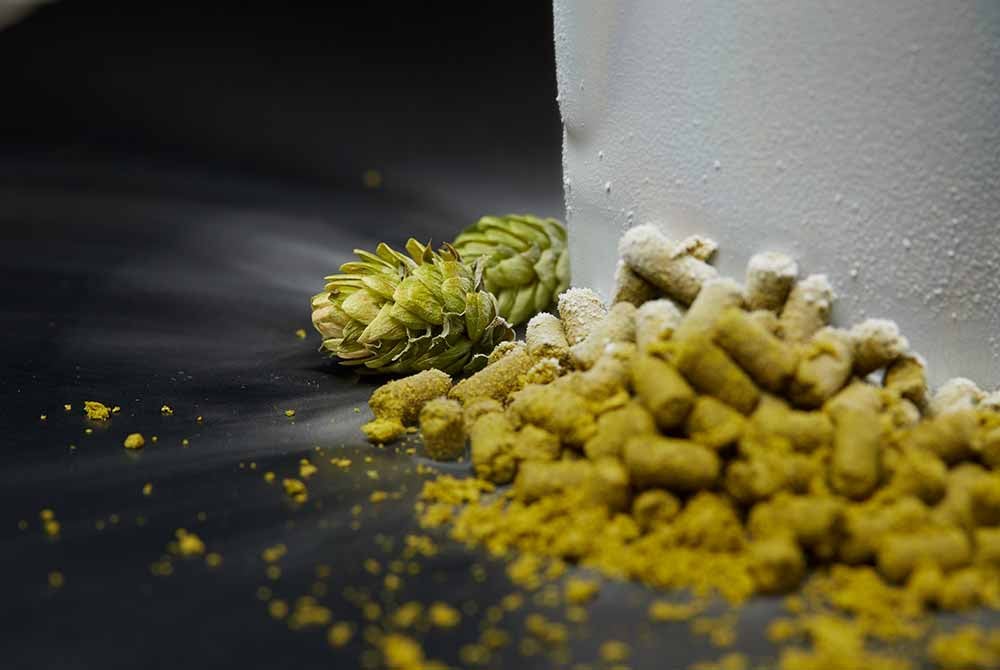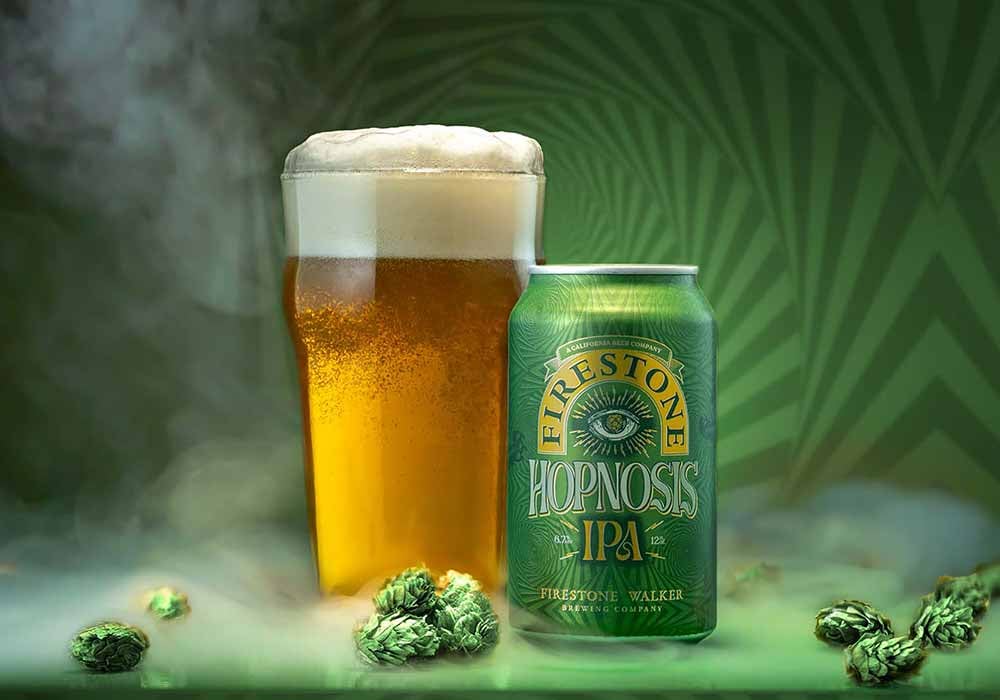Why Cryo Hops® Are the Coolest Hop Trend

July 15, 2022

In the craft beer world, hops have become the equivalent of brewers’ gold. And if regular hops are like gold, then Cryo Hops® are like platinum, even more coveted.
Heavily hopped New England-style or hazy IPAs have exploded in popularity over the past few years. Just take a look at a roundup of yearly Untappd data in 2021. According to Untappd’s Top Ten Styles of 2021, “IPA - New England” ranked as the second-highest checked-in style on the app with over 6.1M check-ins.
Simultaneously American hop varieties such as Amarillo, Cascade, and Citra have been on the rise. But regardless of type, one thing remains the same—it’s the goodies inside the hop, called lupulin, that create these expressive hop flavors and aromas that we’ve all come to love.
Cryo Hops® separate that lupulin from a hop cone and pelletize it to create an enriched hop pellet that brews brighter, more expressive, juicier beers.
And they’ve become a new tool in a brewer’s arsenal. These days hop trends are constantly evolving, but keeping up on what consumers find hot (and cool) could be the key to creating your next big beer. Cryo Hops® just may be the coldest new hop evolution you should try.
What We’ll Cover in This Piece:
What Exactly Are Cryo Hops®?

Breaking it down plainly: Cryo hopping includes a “deep cooling of a hop that hardens the lupulin gland and makes it easier to separate plant material away from the part of the hop that contains brewers’ value,” says Matt Brynildson, brewmaster at Firestone Walker in Paso Robles, CA in a piece for Hop Culture on the brewery’s new Hopnosis IPA featuring Cryo Hops®.
But digging deeper, to truly understand Cryo Hops®, we first need to break down the structure of a hop on a very basic level. Most hops come in pelletized form under the moniker T-90, which stands for Type 90. This structure means that 90 percent by weight of that pellet is hop green material, essentially the outside leafage of a hop cone often called bract. The other 10 percent is something called lupulin.
“Hop cones are made up of green stuff, and if you rip it open, the yellow stuff in the middle that looks like pollen are the lupulin glands, where all things we care about live,” says Eric Sannerud in an article for Hop Culture, former hop brand manager at BSG and current president at Sannerud Hop Consulting.
Containing all those alpha acids and essential oils that give hops their flavor and aroma, lupulin is like that aforementioned gold treasure.
“I used to say if we could grow lupulin on an orange tree, we’d grow oranges and put it in beer,” says Sannerud. “All the beautiful green cones and huge fields of hops are just there to grow a little bit of lupulin.”
To take advantage of that coveted lupulin, some hop pellets such as T-45 contain 45 percent green matter and 55 percent lupulin. These products that contain more lupulin are considered lupulin-enriched products.
Think of lupulin-enriched products like the generic brand term for any pellet that contains more lupulin material than green matter.
Now, different hop companies have proprietary ways of creating these lupulin-enriched products. For exampl,e Hopsteiner makes its Lupulin Pellet line while John I. Haas has a series called LUPOMAX. And Yakima Chief Hops (YCH) makes Cryo Hops®.
“All these offerings are more or less the same product with a different brand name. It’s like Kleenex is a brand name for tissue,” says Sannerud.
But Yakima Chief Hops popularized the term Cryo Hops®. Derived from the Greek word kryos, meaning frost, Cryo Hops® are YCH’s own fingerprint on lupulin-enriched products.
In 2014, YCH saw a pain point for its customers in the field. “With the advent of New England IPAs and higher hopping rates, we tended to see in the market that brewers were suffering hard from delicious beer, but heavy yield loss,” says Spencer Tielkemeier, East Division Lead and Brewing Innovations at YCH in an article for Hop Culture. “We thought, how can we produce a product designed to yield efficient and extremely high-quality aromatic beers?”
The process started small with prototypes developed on a pilot system in YCH’s production facility in Sunnyside, WA. In the first year, the hop grower-owned company only produced several thousand pounds of the product. By 2016, YCH had expanded its facility, named the line Cryo Hops®, and began to see the demand in the market.
In 2020, YCH produced six million pounds of Cryo Hops®. Now, the company has its own standalone building and a separate plant all designed to pump out Cryo Hops®.
“Cryo is designed from the ground up to be the most aromatic and oil rich pellet we can provide,” says Tielkemeier. “Unlike other concentrated pellet formats, we don’t hunt for specific alpha or oil specifications. We just want to capture as much lupulin in the pellet as we can.”
Catching and containing all that lupulin is the key to Cryo Hops®.
How Does YCH Make Cryo Hops®?

While the process will differ slightly for each company, YCH makes its Cryo Hops® by starting with the fresh hop bales. A specially designed plant quickly chills the raw hop to sub zero temperatures (hence the Greek influence on the name Cryo) using liquid nitrogen. And then shatters it.
YCH sifts through the remains. “The separate glands are like sand at this point,” says Tielkemeier. “They maintain structure and are very hard. The leaf material is separated from the lupulin into two different fractions. At this point the lupulin becomes Cryo pellets and the other material goes on to become a couple different product streams.”
It’s important to note that this process is purely mechanical separation. The hops aren’t being chemically altered in any way.
Regardless of the name or exact process for separating green material from the yellow material, the benefits of Cryo Hops® remain the same.
Three Main Reasons to Consider Brewing with Cryo Hops®

Essentially, Cryo Hops® have three distinct advantages. First, they enhance the actual flavor and aroma of a beer. Second, they improve the brewing process. And third, they increase a brewery’s savings.
Enhancing Flavor and Aroma of a Beer
Generally, lupulin-enriched products create a more intense hop aroma and flavor experience. With all its alpha acids and hop oils, a more concentrated dose of lupulin builds a higher flavor profile in the final beer.
“To me I describe Cryo Hops® as a singing high note, like an alto, it punches and cuts through everything else and it shines,” says Matt Speckenbach, head brewer at Hopworks Urban Brewery in an article for Hop Culture, who uses Cryo Hops® exclusively in the brewery’s flagship Powell Cryo IPA.
Because the concentrated lupulin pellets accentuate the hop flavor and aroma, they’re best used in any form of hoppy beers or IPAs.
“Generally, in hoppy beers brewers are dry hopping the F out of a beer….so [Cryo Hops®] perform great there,” says Sannerud.
Higher Yields
Beyond boosting the final flavor, Cryo Hops® also save brewers from losing beer. During the brewing process, green matter acts like tiny sponges, often soaking up liquid. But the yellow substance doesn’t.
“With Cryo Hops®, you’re not sponging up so much liquid in the bottom of the fermenter,” says Tielkemeier. “Brewers can create heavily hopped, super aromatic beers without losing yield.”
When Speckenbach uses Cryo Hops® in his recipes, he’s seen anywhere from a five to ten percent increase in the yields of his beers. While that may seem small, the savings make a huge difference. “Even if we’re only able to squeeze an extra barrel or two in our hoppy beers, that can be pretty significant to getting the cost of goods down,” says Speckenbach.
For instance, Speckenbach experimented with Cryo Hops® in Hopworks Urban Brewery's gold-medal-winning Ace of Spades Imperial IPA.
“I’ve been hitting a wall with the cost of that beer,” says Speckenbach. “We put a ridiculous amount of hops in there—over 100 pounds for a 20-barrel batch. It’s massive. We saw our yield drop super low, so I’m hoping to pull it back and make the beer punchier than it was before.”
Increase Savings
According to Tielkemeier, a brewer only needs to add half as many Cryo Hops® into their recipe as pelletized hops. For example, if their original recipe called for ten pounds of T-90 Citra pellets, a brewer only needs to use five pounds of Cryo Citra pellets.
Using half as much material per batch of beer will ultimately lead to higher savings and net increase in revenue per batch in the end.
How to Brew with Cryo Hops®

The beauty of Cryo Hops® is that they can be used anywhere a normal T-90 pellet would be, including in the kettle, in post-boil or the whirlpool, in fermentation, or in dry hopping. This means brewers new to lupulin-enriched products should have an easy learning curve.
"It’s a very user-friendly product,” says Tielkemeier. “Cryo Hops® don’t require any special skill, process, or system. They can be used in any brewery."
Although if you visit YCH’s Cryo Hops® homepage, you’ll find a few suggestions. “We recommend adapting any recipe by substituting 40g of Cryo Hops® pellets either 25g of T-90 pellets or 15g American Noble Hop pellets for every 100g of T-90 used,” writes YCH on its website. “For new recipes we recommend starting with an estimated dosing rate of Cryo Hop pellets at 40-50% of T-90 hop pellets by weight. Cryo Hops® can be utilized anywhere whole leaf hops and hop pellets are traditionally applied.”
For YCH’s advice on how to add Cryo Hops® in different parts of the brewing process, visit their website.
Last year, YCH generated six million pounds of Cryo Hops®, which makes them an extremely popular product.
“At this point, it's not a fluke," says Tielkemeier. "It’s a product we see having a long-term fit in a brewer’s toolbox.”
What Are Some Examples of Beers with Cryo Hops®?

You can find Cryo Hop beers all over the country today. Here are a few:
Firestone Walker Brewing Company - Hopnosis IPA
Perfectly balancing new-school hops and techniques—such as cryo hopping—with the old-school West Coast IPA style, Hopnosis seems poised to poetically represent what the future of beer looks like in 2022.
Beginning with a very simple malt bill of 2-Row, Carapils, wheat, and Munich malt, Hopnosis’ grains create a great canvas for the hops. Brynildson added Talus on Callista on the hot side followed by Mosaic Cryo mid-fermentation, “to bring some new-school flavors that everyone is starting to associate with IPA in general whether it’s hazy or West Coast,” says Brynildson. To finish up, he dry hops with a blend of new-school Pacific Northwest and New Zealand hops including Idaho 7, El Dorado, Cashmere, Nelson Sauvin, and Riwaka.
All contribute to a West Coast IPA for a new generation of drinkers, a taste of the future to where this iconic style is heading.
Hopworks Urban Brewery - Powell Cryo IPA
Featuring Cryo Idaho-7, Cryo Amarillo, Cryo Azacca, and Cryo Chinook, this beer is a very classic West Coast IPA.
“This beer has a nice piney, grapefruit thing with Amarillo and Chinook while Azacca brings a light tropical element and Idaho-7 brings a rich, rounder fruitiness,” says Speckenbach.
Other Half Brewing Co. - Mosaic Cryo + Simcoe Cryo
Other Half’s first all-lupulin powder dual-hop IPA featuring Mosaic Cryo and Simcoe Cryo produced an imperial IPA heavy on the citrus and tropical notes. Since then, the brewery has gone on to brew a whole host of beers with both Mosaic Cryo, Simcoe Cryo, Citra Cryo, and more.
Revolution Brewing - Cryo-Hero
The Chicago-based brewery gave a new name to frozen Midwestern winters with Cryo-Hero. Cryo Citra, Simcoe, Mosaic, and Centennial created a huge blast of citrus and fresh fruit. According to Revolution, every pound of Cryo Hops® they used packed a punch equivalent to two pounds of regular hops. Accordingly, the brewery’s Untappd description of this beer says a lot: “A hazy gust of tropical fruit, sharp lime zest, and sweet melon skates across the frozen expanse.”
Alvarado Street Brewery x Cellarmaker Brewing Co. - When Doves Cryo
Leveraging Mosaic Cryo powder, When Doves Cryo was a collab between two hop-forward California breweries: Alvarado Street and Cellarmaker. The Cryo Mosaic gives this beer tropical fruit notes that complement its pillowy mouthfeel.
Pinthouse PIzza - Beautiful Tropical Fish Hazy IPA
The Austin-based taphouse uses Cryo throughout many of its beers. Beautiful Tropical Fish is a real hop-head banger. Mosaic Cryo joins a hop bill of Lotus, Galaxy, Strata, Cashmere, and Mosaic for a medley of Meyer Lemon, citrus, and young sweet coconut notes.
See Why Breweries Like You Are Making The Change
Ollie is the affordable, easy-to-use software to manage your brewery and operations. See why breweries like yours are making the switch.
